#tailleurs chanel
Text

US Vogue March 15, 1959
Left: White woolen daywear, as simple as a sailor's jacket; buttoned in Chanel-style brass. Right: Chanel's favorite black lace dress molded to the hips, then fullness; here worn with a necklace frame, secured with a Chanel brooch. The model on both pages is French actress and cover girl, Marie-Hélène Arnaud; she was photographed in the "sumptuous golden rooms" of the Hotel Lauzun on Île Saint-Louis.
À gauche : Tenue de jour en laine blanche, aussi simple qu'une veste de marin ; boutonné en laiton façon Chanel. À droite : la robe en dentelle noire préférée de Chanel moulée jusqu'aux hanches, puis la plénitude ; ici porté avec une armature de collier, fixé avec une broche Chanel. Le modèle sur les deux pages est l'actrice française et cover girl, Marie-Hélène Arnaud; elle a été photographiée dans les "chambres dorées somptueuses" de l'Hôtel Lauzun sur l'île Saint-Louis.
Photo Henry Clarke
Vogue archive
#us vogue#march 1959#fashion 50s#1959#chanel haute couture#french designer#french style#chanel suit#tailleurs chanel#spring/summer#printemps/été#lace dress#robe en dentelle#marie hélène arnaud#henry clarke#hôtel lauzun#île saint louis#paris
9 notes
·
View notes
Text

wanna know who also was lame and boring? Karl Lagerfeld
and who also is lame and boring? his cat
#praying for the souls of those dressed as giant cats#furrygala2023#who cares tho#I would have shown up dressed as Marge Simpson with the pink tailleur#met gala 2023#chanel#karl lagerfeld#fashion#mine#met gala
4 notes
·
View notes
Text
Anatomy of a lie: the French connection
With a very short day in sight at the office, I exceptionally go back to the whole Rash sightings colossal bullshit, for the sake of science. By now, we know *urv denied sending the submittal to Deux Moi: something I also expected to happen, in the context of her current feud with Miss Marple (way more reasonable and probably also way better informed).
Going back on memory lane, let's remember how the Rash Innuendo started. With this, conveniently kept under covers and then brought to light when Rash's name was out on the market:

I have one very important thing to comment: no one, no woman in her right mind, no matter if she is an art gallery owner, a lawyer, a teacher, a pop star on drugs or a fashionista wannabe (like Rash) would ever wear a baseball cap inside a French restaurant that is not: a) a trucker's pit stop joint on l'Autoroute du Soleil (the Sun Highway, A6/A7, relays Paris to Marseille) or b) a Burger King franchise in Seine-Saint-Denis (the infamous Neuf-Trois, or 93, after the INSEE's topographical code number for car plates and counties: in short, Paris's metropolitan area Bronx, if you wish, where all the riots start). Especially "a bougie" one: you do not have the slightest clue about real, living and breathing bourgeois French women (madame Mère's friends and also my own uni mates), quite a different species from the Californian one. Rash is anything but bourgeois, Canadian or not (yet a Canadian who lived in Paris and as such must be familiar with that code). I am talking string of pearls and tailleur Chanel/ petite robe noire and Vuitton bag and Louboutins. On a daily basis and even on the subway. Not baseball caps and scattered shopping bags at the Hôtel Costes.
No client of that restaurant (I forgot to mention yesterday) would ever take pictures with their phones. This informed me about the fact (FACT) you have never been to France, let alone ever set foot in a French high-end joint. French people prefer living their social life outside of their homes. When invited at someone's place for dinner, you can be sure you are, by now: a) intimate; b) a very close, trusted and valued friend; c) someone to be absolutely included in their social circle, for various reasons (high level networking dinners in Paris come to mind: something I know very well). So, restaurant it is for everything like: bantering, flirting, getting to know each other, spending quality time with witty and hysterically funny people, looking for a new job, getting a new job, looking for a new investor in your projects, the possibilities are endless. That being said, conversation at that table is sacred: your full attention must be there at all times, repartee and consistency are expected. No one, literally no one will spend their time scanning the room for a B-list actor kissing a blonde trophy woman in public, nonetheless. Read my lips: not a soul - they would be all engrossed in whatever the talk is about at their table.
The game shifted to a superior gear with this French speaking Anon:

Someone saw something louche/amiss in all this and reacted:

The French is NOT 'too good'. That French is semi-vulgar and provincial, as in the crude and pauper ils étaient l'un sur l'autre (I was expecting a je te jure/ I swear to you that never came and it usually does). And what to say about elle semble beaucoup plus réelle que les autres filles? It's Google Translate all the way. A real, walking talking French person would have said something along the lines of: elle semble beaucoup plus crédible/vraisemblable que les autres filles (she looks way more credible than the other girls), simply because réel(le), in spoken and written nowadays French, always applies to concepts, never to people: un réel plaisir (very contrived), for instance. C'est quelqu'un de réel means absolutely nothing and I would laugh like a drain if I heard someone telling me something like this. Last but not least, despite insisting it was a different Anon, they all seem to use the same words: they had lots of fun/ils s'amusaient vraiment. Something you use all the time, too. Of course.
Keep your hands off France, madam. Très facile de s'y prendre les pieds dans le tapis. And for once, I am not going to translate, since you speak it so well and I am sure you got the message.
PS: The closest to a real French bourgeois woman (last pics included) is C. And FYI, that is not my style: I dress like a preppy since I was 15 and I am very happy with it.
123 notes
·
View notes
Text
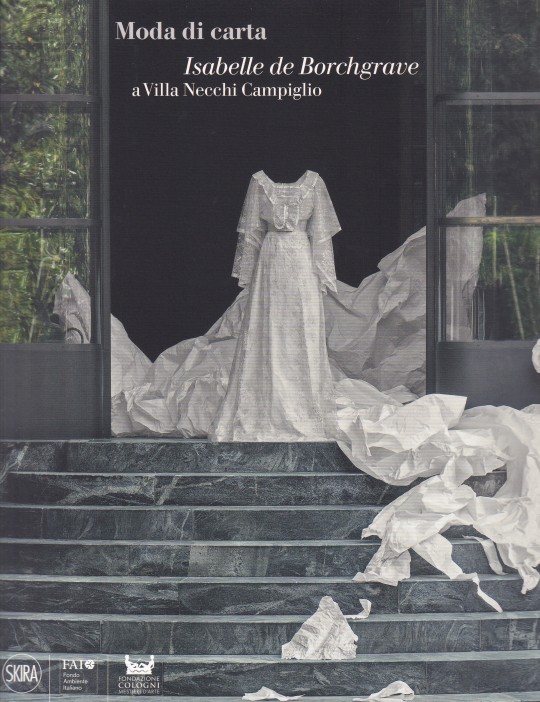
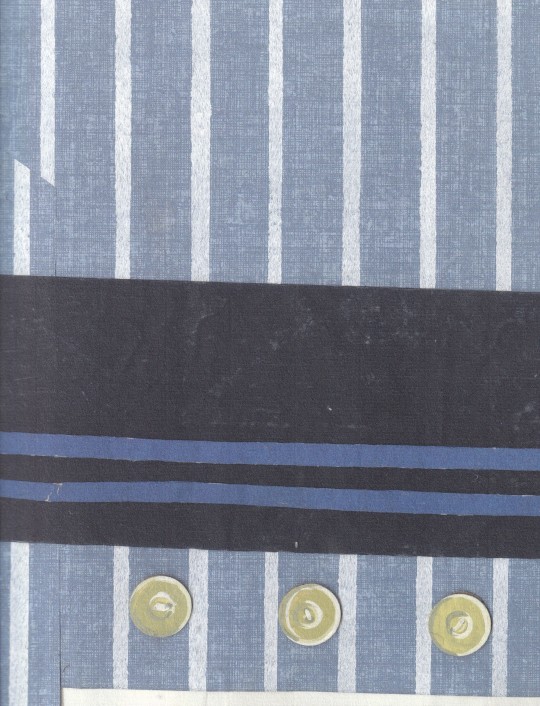
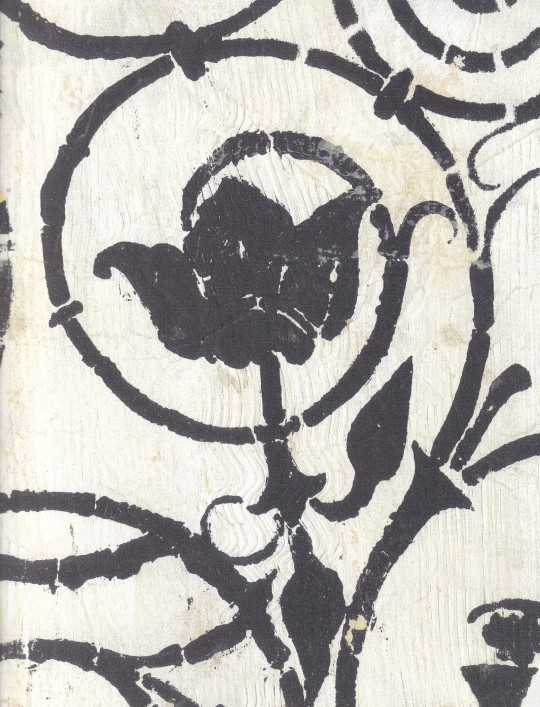
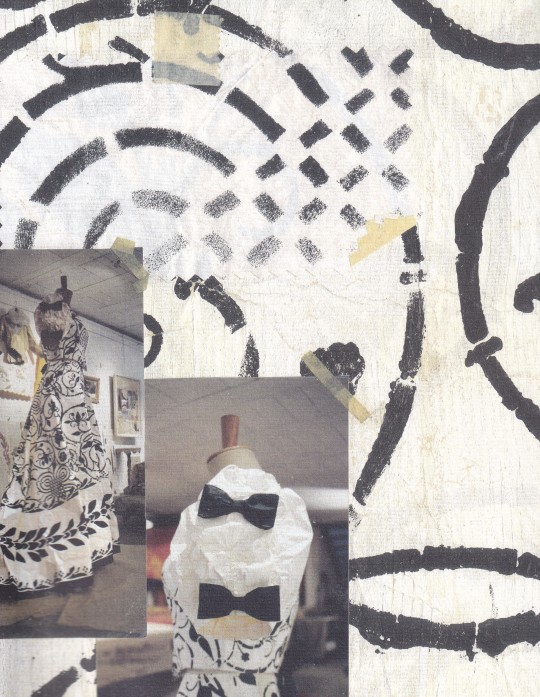
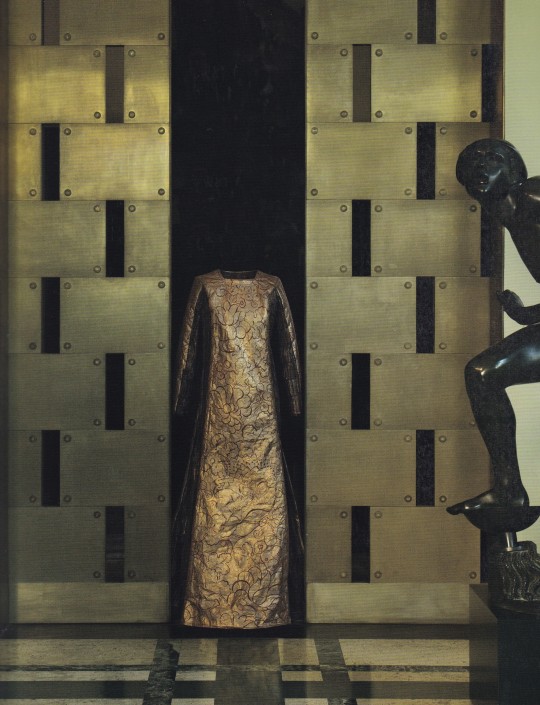

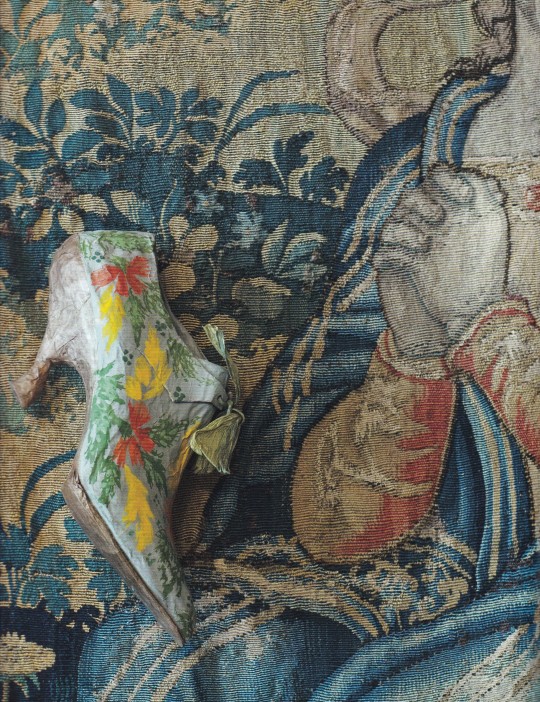

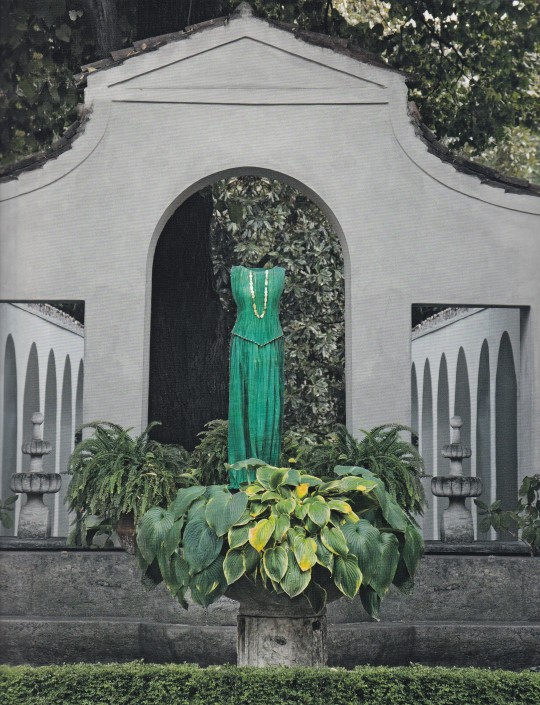
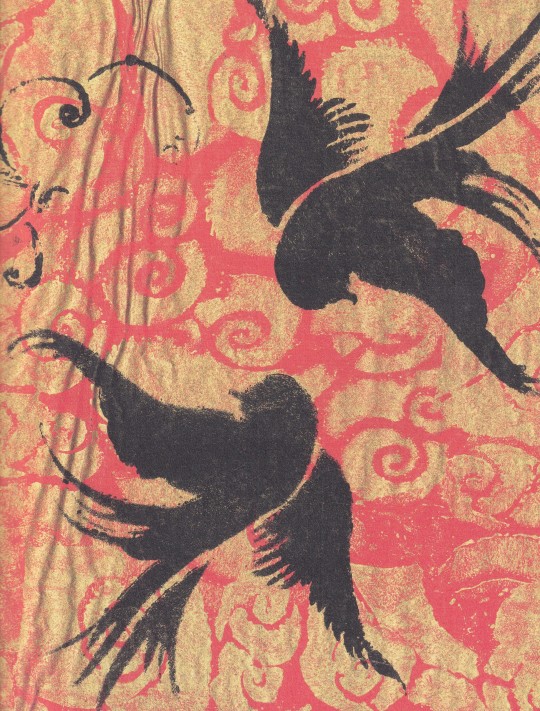
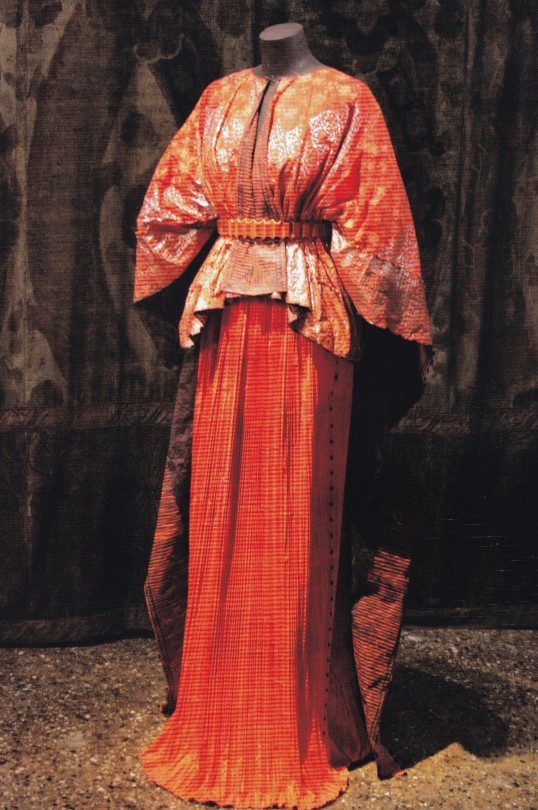

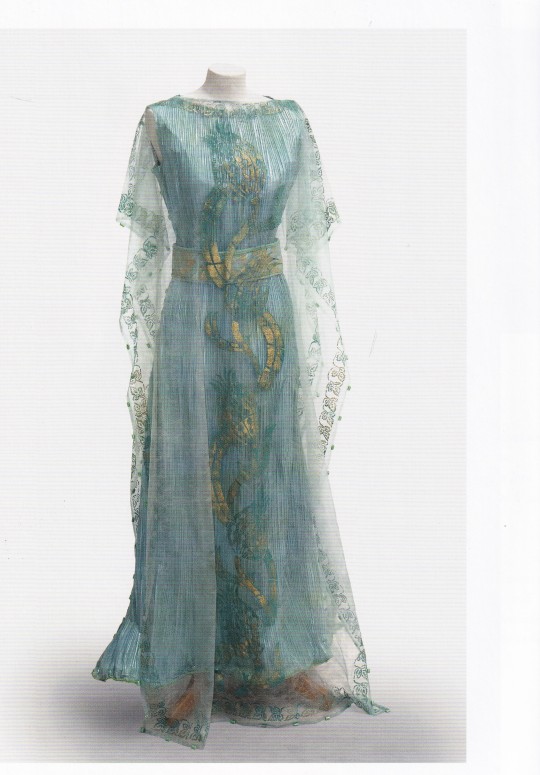

Moda di carta
Isabelle de Borchgrave a Villa Necchi Campiglio
Giorgio Verzotti
Skira, Milano 2016, 98 pagine, 104 ill.a colori, 24x28cm, brossura, ISBN 9788857234168
euro 26,00
email if you want to buy [email protected]
Pubblicato in occasione della mostra milanese in collaborazione con il FAI – Fondo Ambiente Italiano e la Fondazione Cologni dei Mestieri d’Arte, il volume illustra la storia della moda e dello stile attraverso una selezione di abiti realizzati interamente in carta con l’inconfondibile talento creativo dell’artista Isabelle de Borchgrave: un originale excursus che parte da un sontuoso abito di corte di Elisabetta I per arrivare agli eleganti vestiti da ballo di Worth, agli abiti in stile orientale delle sorelle Callot fino alle inconfondibili creazioni di Coco Chanel e ai tailleur di Dior.
Non solo vestiti, ma anche scarpe e accessori che ci mostrano come da un materiale così semplice possa uscire una tale opera d’arte: “Si parte sempre da un foglio di carta – dice Isabelle de Borchgrave – ma poi la pittura, le mani, l’acqua, la straordinaria padronanza e la fantasia nell’uso dei materiali riescono a produrre effetti di velluto e di seta, spessori e morbidezze alla vista e al tatto, lucentezze d’oro e di perle e impalpabili preziosi merletti che ricordano la perfezione dei maestri fiamminghi”.
Moda di carta presenta le riproduzioni delle più grandi marche, dal classico tailleur di Dior agli abiti da sera di Lanvin e Poiret, ai tradizionali capi di Chanel, oltre alle minuziose riproduzioni di abiti-icona che hanno rivoluzionato il nostro modo di vestire come l’abito Delphos, disegnato da Mariano Fortuny ispirato dalle tuniche delle sculture greche che rappresenta una radicale innovazione nell’abbigliamento femminile, poiché confortevole, privo di busto, e di facile realizzazione.
09/05/24
#moda di carta#fashion exhibition catalogue#Villa Necchi Campiglio 2016#abiti in carta#scarpe#accessori#Dior#Lanvin#Poiret#Chanel#Fortumy#fashion books#fashionbooksmilano
23 notes
·
View notes
Text








Marseille. A la Vieille-Charité, une expo "Panoramas" faisant le tour de la variété des musées de la ville (d'où cet aspect disparate, mais très plaisant)
Fank Sorbier - boléro 1987
au fond, Pierre Soulages - " sans titre" ; Dior - ensemble tailleur ; Chanel - veste jupe
Jean Patou - robe du soir "Nuit de Chine" 1922
Pierre Balmain - robe-bustier 1990
Pierre Balmain - robe-bustier 1972
derrière : voir 3 ; Raymonde - calotte 1950
voir 4
voir 5
#marseille#vieille-charité#mode#panoramas#fashioon#frank sorbier#boléro#pierre soulages#dior#chanel#jean patou#robe du soir#pierre balmain#bustier#calotte
3 notes
·
View notes
Text
La créatrice de mode légendaire est née sous le nom de Gabrielle Bonheur Chanel en 1883 à Saumur, en France. La jeune fille a grandi dans la pauvreté, vivant dans un studio avec ses parents et ses frères et sœurs. Sa mère était blanchisseuse et son père vendeur

Lorsque Gabrielle Chanel a eu 18 ans, elle a quitté l’orphelinat et a commencé à travailler dans une boutique de tailleur. Le soir, la jeune femme chantait dans un cabaret, Moulins, avec sa tante, Adrienne. Adrienne était âgée d’environ un an de plus que sa nièce, et les deux chantaient pour se faire un peu d’argent de poche. C’est avec ce travail que Gabrielle s’est vue attribuer le surnom de Coco. Lorsqu’elle chantait, la foule demandait des rappels en criant « Coco ! Coco ! ». « Coco » était un mot français utilisé pour désigner une enfant ou femme paraissant plus jeune. On ne sait pas vraiment quelle signification des deux le public attribuait à la chanteuse, mais le nom est resté. Et la couturière n’imaginait pas que dans le public se trouvait un homme qui changerait sa vie.

7 notes
·
View notes
Text
Coco Chanel
Nata a Saumur, Francia, il 19 agosto 1883, Gabrielle Chanel, chiamata "Coco", ebbe un’ infanzia molto umile e triste, trascorsa in gran parte in un orfanotrofio dopo la morte della madre.
Con lo stile lanciato da lei ha rappresentato il nuovo modello femminile del '900, ossia un tipo di donna dedita al lavoro, a una vita dinamica, sportiva, priva di etichette e dotata di autoironia, fornendo alle donne il modo più idoneo di vestire. Inizia la sua carriera disegnando cappelli ma l'apice della sua creatività è da attribuire agli anni trenta, quando, dopo aver inventato i suoi celeberrimi e rivoluzionari "tailleur" (abbigliamento tipicamente appartenuto all'uomo)
In buona sostanza, si può dire che Chanel rimpiazzò il vestiario poco pratico della belle epoque con una moda larga e comoda che si adattasse alle “nuove donne” che stavano nascendo, a donne moderne e innovative; fece in modo che, anche la moda si allineasse con le battaglie che al tempo le donne portavano avanti e che le aiutasse verso il loro percorso di emancipazione. Coco fu in grado di modernizzare ulteriormente il nuovo stile di vita che le donne stavano iniziando ad adottare. Tuttavia però le idee di Coco non potevano essere messe in atto e realizzate se non ci fosse stata una figura maschile in secondo piano, che aveva i contatti, che finanziava le sue idee e che le permetteva di realizzare i suoi progetti per farla entrare in contatto con quel mondo (come Étienne, un uomo grazie al quale Coco iniziò a entrare nell'esclusiva scena della moda parigina, che altrimenti le sarebbe stata totalmente inaccessibile). Ricordando però un contesto storico in cui le donne come Coco erano già viste come troppo rivoluzionarie, troppo sopra le righe se volevano lottare e far si che le loro ideazioni venissero alla luce dovevano sempre e comunque fare affidamento a figure maschili, anche se lei stessa non voleva dipendere da nessuno, ma questo perchè non ci sono mai state eque possibilità e opportunità. Anche quando rifiutò la proposta di matrimonio da parte del duca di Westminster poiché avrebbe dovuto abbandonare la sua attività. Questo fa capire quanto rimase sempre lucida, consapevole e determinata nel voler essere fino alla fine una donna forte, indipendente e dedita alle sue passioni e al suo lavoro.
di Francesca Schiavo e Anna Vigato
0 notes
Text
Un atelier, c'est souvent salissant.

Entre la peinture, la poussière et autres mediums, cela va sans dire qu'un atelier est un endroit salissant.
Fais donc attention de ne pas y aller avec ton tailleur Chanel immaculé. Sans pour autant venir avec ton pire jogging Domyos. Quoique...
Bref, évite d'y aller avec des fringues ou un sac auxquels tu tiens comme à la prunelle de tes yeux. Un accident est vite arrivé.
▪️▪️▪️▪️▪️▪️▪️▪️▪️▪️▪️
Hey ! Je t'invite à parcourir les autres posts découvrir les bonnes pratiques à adopter en atelier de modèle vivant et autres tutos pour les gens désirant se lancer dans cette activité.
0 notes
Text


Fashion Show, Spring/Summer 1987. Chanel Haute Couture. Model Marpessa Hennink.
Défilé de mode, Printemps/Éte�� 1987. Chanel Haute Couture. Modèle Marpessa Hennink.
#chanel#chanel haute couture#karl lagerfeld#fashion 80s#1987#spring/summer#printemps/été#marpessa hennink#chanel suit#tailleurs chanel#fashion show#défilé de mode
11 notes
·
View notes
Text
COMMENT ÊTRE UN BON VENDEUR
Comment être un bon vendeur ?
Être un bon vendeur : vendre est un art. Un peu d’autorité, un peu de passivité, si vous créez le bon équilibre entre la persuasion et le charme comme le font les bons vendeurs, vous serez capable de vendre des sucettes au ketchup à une femme en tailleur Chanel un 14 juillet (bien que nous vous recommandions quelque chose d’un peu plus utile). Apprenez comment…

View On WordPress
0 notes
Note
They better open up the Chanel Archives for the met. Literally the perfect opportunity. The theme was literally made for it.
THEY BETTER . i just don’t want a tailleur tho put in an evening dress pls !!!!!! this is a gala after, she needs to be dressed to the nines
0 notes
Text

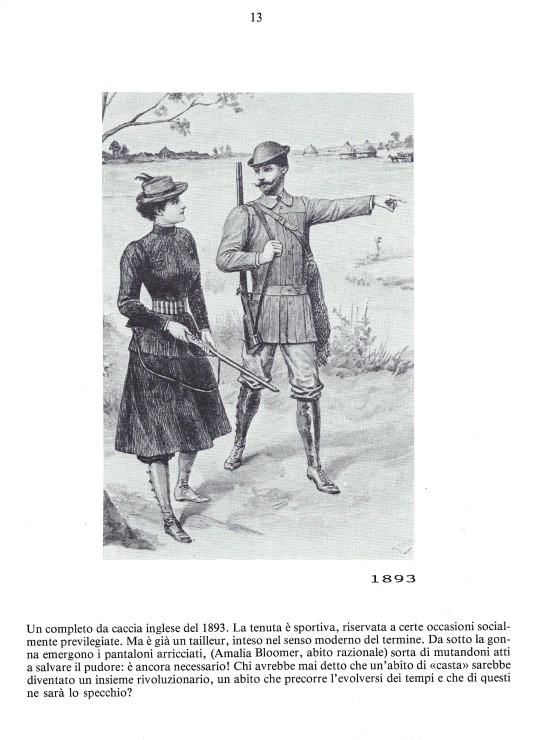
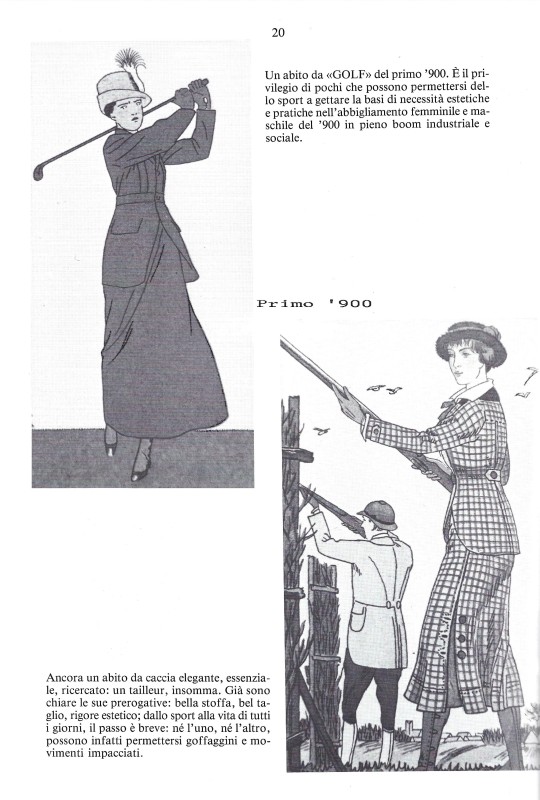

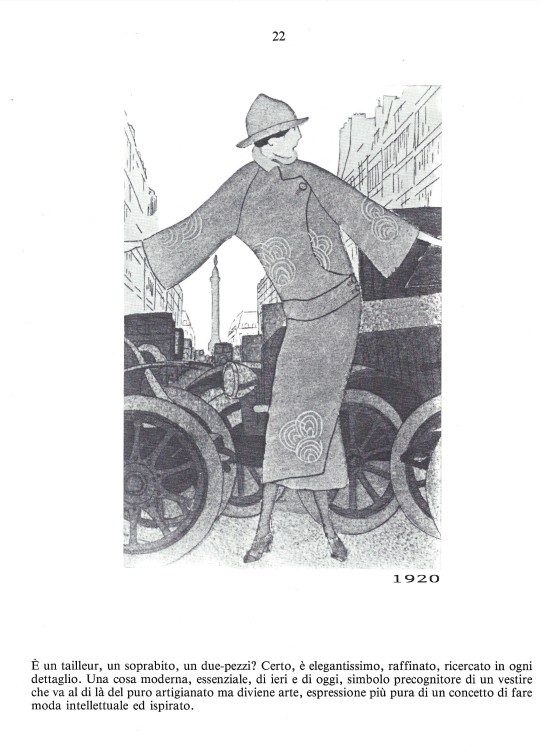

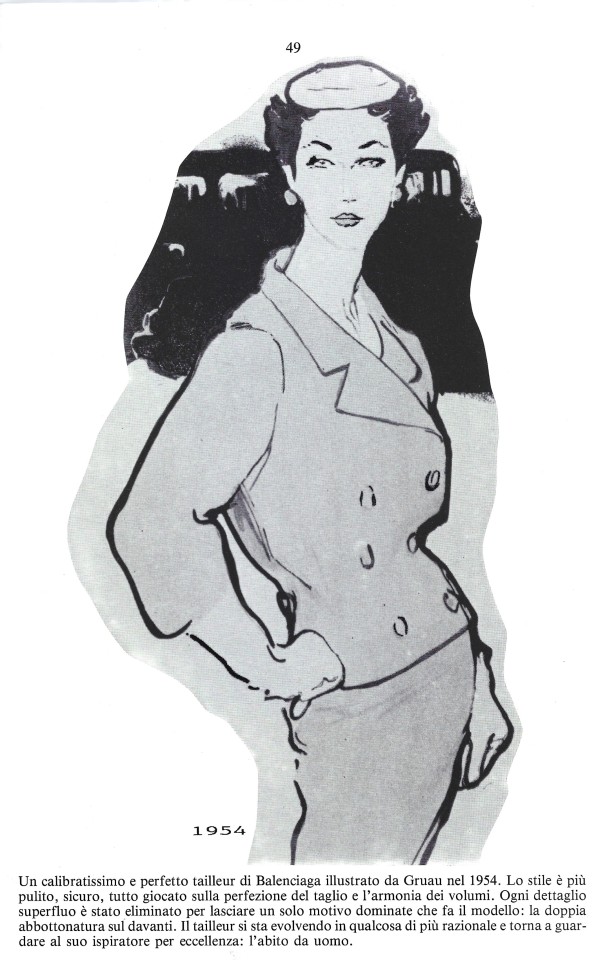
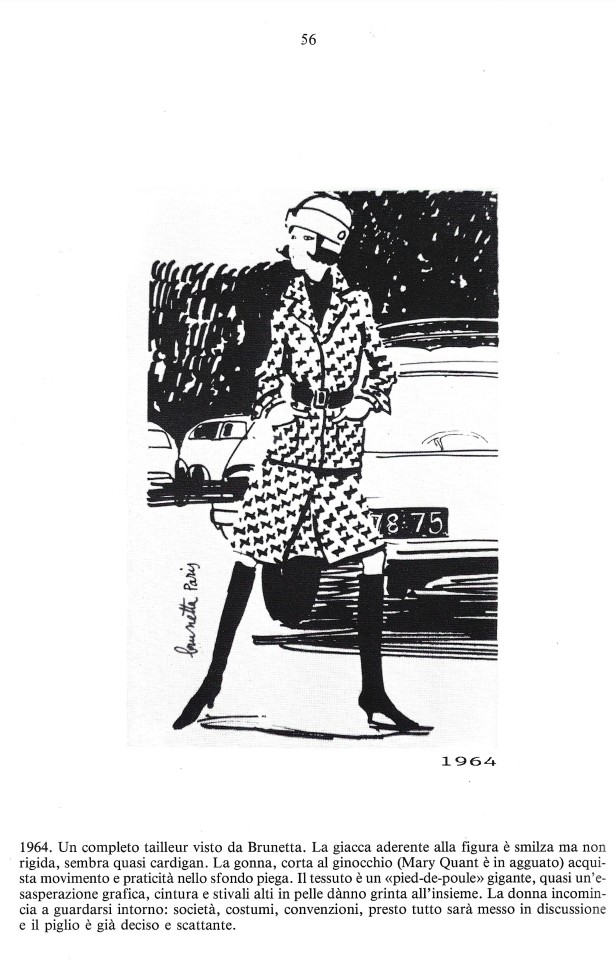

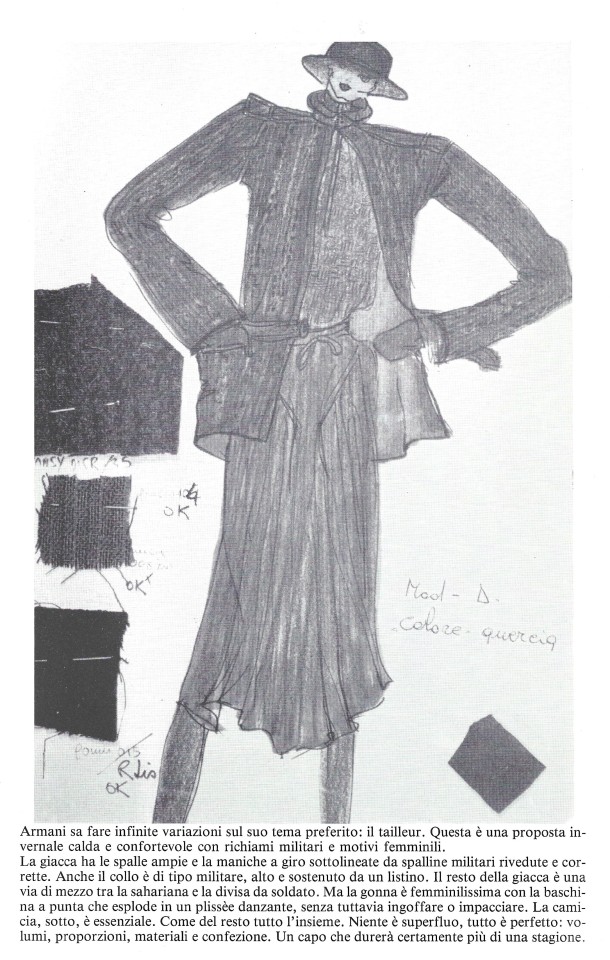
Professione Moda 6 - La storia del tailleur
Testo propedeutico allo studio della moda
a cura di Giorgio De Zout
Marcon Editrice, Città di Castello 1987, 77 pagine, 21,3x30cm
euro 40,00
email if you want to buy [email protected]
l nome tailleur deriva dall’omonimo termine francese che designa prima di tutto chi si occupa della creazione di un abito su misura, il sarto. Solo in seguito diventa il nome di uno specifico abito femminile che viene sin da subito messo in contrapposizione al completo da uomo.
Le origini del completo da uomo affondano nel Seicento, così come mostrano numerosi dipinti, mentre per i tailleur femminili si dice che un primissimo modello venne creato nel Settecento. Ad ogni modo, per il tailleur “moderno” si rimanda all’anno 1885, quando ne venne ideato uno per la Principessa del Galles (molto probabilmente Maria di Teck, la futura moglie del re).
Il tailleur degli inizi aveva uno scopo ben pratico: veniva indossato come tenuta da equitazione e si può facilmente immaginare quanto fossero spessi i materiali utilizzati per realizzarlo; nelle cronache, infatti, si parla spesso di intelaiatura di crine. È per questa ragione che per la data di nascita del tailleur “contemporaneo” si rimanda al 1917, quando Gabrielle Chanel iniziò a produrne di nuovi in jersey: è così che del tailleur venne scoperta la praticità, dal momento che il questo tessuto avvolge delicatamente il corpo e ne accompagna i movimenti. Si narra, inoltre, che questo fosse uno dei pochi materiali disponibili durante gli anni di guerra: la stilista deve aver fatto un ottimo uso del modo di dire “fare di necessità virtù”, non trovate?
Se ci fermiamo un attimo a pensare al tailleur per come lo conosciamo noi oggi, sicuramente ci verranno in mente tantissime occasioni in cui è considerato il capo adatto da indossare: in ufficio, ad una festa, etc. Tale versatilità deriva in gran parte dal fatto che la coppia giacca & gonna (oppure giacca & pantalone) può essere declinato in modelli differenti, partendo dalla lunghezza, passando per la forma, terminando con la tipologia e il colore del tessuto scelto.
Al tailleur viene spesso conferito il ruolo di essere un indumento a supporto dell’emancipazione femminile, un po’ perché è riuscito a liberare le donne dagli ingombranti abiti in uso nel passato, rendendo i movimenti dell’indossatrice più agili (ancor di più da quando nel 1966 Yves Saint Laurent per primo ne propose uno che prevedeva i pantaloni abbinati alla giacca), un po’ perché a partire dagli anni Ottanta il tailleur viene visto come l’abito che caratterizza la donna in carriera.
12/11/23
2 notes
·
View notes
Text
I grandi marchi: Chanel

La casa che segnò per sempre la moda del Novecento…
Gabrielle Chanel nacque il 19 agosto 1883 nella provincia francese e dopo che la madre, debole e malata, morì prematuramente, il padre, venditore ambulante, mandò i due maschi a lavorare e le tre bambine nell’orfanotrofio di Aubazine.
Dopo sei anni nell’istituto delle suore del Sacro Cuore di Maria, Chanel, con la zia Adrienne, si trasferì a Moulins e lavorò presso un negozio di biancheria e maglieria come commessa per poi, dopo un anno, aprire una piccola attività di riparazioni sartoriali.
Li Gabrielle conobbe Etienne Balsan che, intrigato e ammaliato dalla figura di Chanel, le chiese nel 1908 di trasferirsi nella sua tenuta nella campagna vicino a Parigi.
Durante la permanenza a Royallieu, Chanel scopri mondo delle attività sportive, le scuderie, i cavalli da corsa, le feste, la vita oziosa e le abitudini della classe borghese.
Coco cominciò così a modificare i sui cappelli, spogliandoli di tutte quelle inutili decorazioni, riducendone le forme e rendendoli più pratici da indossare e, con l’aiuto finanziario di Balsan, aprì nel 1909 un piccolo laboratorio a Parigi.
L’anno successivo, nel 1910, Gabrielle affittò la prima sede di rue Cambon della maison Chanel, grazie all’aiuto economico di Arthur Capel, soprannominato Boy.
Nel 1913, notando che durante l’estate le sue clienti si spostavano dalla capitale a Deauville, in Normandia, Chanel aprì una boutique nella cittadina di villeggiatura.
Coco cominciò a pensare a un abbigliamento più adatto, che andava da capi di maglia dritti e comodi ai pullover sportivi, dai blazer in flanella dal taglio maschile alle cuffie di lana e fu la prima designer ad associare il suo nome ad un profumo nel 1923, con lo Chanel n°5..
Sempre in cerca di novità e cambiamenti, nel 1926 inventò la petite robe noir, l’abitino nero che poteva essere portato in qualsiasi occasione, oggi chiamato tubino.
Tra il 1927 e il 1930 le collezioni di Coco si concentrarono soprattutto sui completi, con taglio maschile e di tweed.
Durante il periodo bellico Chanel si stabilì presso l’hotel Ritz e fino il conflitto decise per l’esilio volontario in Svizzera, dopo esser stata accusata di tradimento alla patria.
A Saint Moritz Coco visse per nove anni e quando nel 1946 tornò a Parigi, quello che la aspetta è totalmente diverso così, nel 1953, organizzò una sfilata per tentare di rilanciare il marchio ma le aspettative non coincidono con i pareri della stampa che stroncò la collezione.
Chanel non si arrese e creò il tailleur in tweed, composto da tre pezzi: giacca, gonna e una blusa, con le rifiniture a trama e ordito di colori contrastanti e, nel 1955, è la borsetta 2.55, imbottita e trapuntata, con la catena dorata.
Lo stile Chanel recuperò la sua fama, proponendosi come alternativa al New look proposto da Dior.
Coco Chanel, dopo una vita intensa, morì il 10 gennaio 1971 e la maison fu diretta dagli assistenti che con Gabrielle avevano lavorato per anni, Gaston Berthelot e Ramon Esparza, e dalle loro collaboratrici, Yvonne Dudel e Jean Cazaubon.
Nel 1983, con la collezione haute couture, debuttò l’icona della nuova era della maison Chanel, Karl Lagerfeld, con una nuova immagine del brand, saldamente ancorata ai valori stilistici della casa di moda ma con dei tocchi innovativi e giovani, sempre al passo con i tempi.
Nel febbraio 2019 Lagerfeld morì ad 85 anni, lasciando un profondo vuoto nel mondo della moda e Chanel nominò Virginie Viard nuovo direttore creativo.
Read the full article
0 notes
Text
Seamstress is an occupation for women that in the past was considered to be one of the lower classes. In early history, seamstresses were slaves or servants who plied their needlework skills to make clothing and other items for their masters. Over time, however, the status of seamstresses has changed dramatically. Today, some of the most famous and well-respected fashion designers in the world are seamstresses. This list pays tribute to those talented women who have made a name for themselves in the fashion industry.
Marie Antoinette de Lorraine-Habsbourg and Her Children by Élisabeth-Louise Vigée-Le Brun (1787) Versailles, Musée national du Château et des TrianonsThe Queen is shown in an up-to-date outfit created by Bertin. Élisabeth Louise Vigée Le Brun , Public domain, via Wikimedia Commons
Rose Bertin 1747-1813 French costume designer or milliner
Rose Bertin is often referred to as the mother of French fashion. In 1783, she opened Paris' first haute couture house, which would make her a pioneer of the industry. She went on to become the dressmaker for Queen Marie Antoinette and even had her own boutique where she directed French fashion trends. Rose quickly rose in fame for her beautiful clothes, innovative designs and her outrageous style that featured dazzling fabrics, luxurious materials, and elaborate details. Her keen eye for fashion led to an incredibly successful career that revolutionized high fashion as we know it today. Although she passed away in 1813, her legacy still remains strong; every year fashion designers pay tribute to Rose's pioneering spirit by incorporating traditional techniques in some of their most iconic pieces.
Painting depicting Betsy Ross and American flag. Snapshots Of The Past, CC BY-SA 2.0, via Wikimedia Commons
Betsy Ross 1752 –1836 (First U.S Flag)
Betsy Ross, an American icon best known for her contribution in creating the first U.S Flag, was a talented seamstress and Revolutionary War patriot. According to family tradition, General George Washington and two members of a congressional committee visited Mrs. Ross in 1776 with a sketch for the flag design. Mrs. Ross made a suggestion that transformed the six-pointed stars on the sketch to five-pointed stars, making it easier and speedier to sew them together. It is believed to be here, in this humble little house belonging to Betsy Ross, that the very first United Sates Flag was sewn from cloth nearly 240 years ago.
Coco Chanel sitting at a desk during a visit to Los Angeles on 18 March 1931. Los Angeles Times, CC BY 4.0, via Wikimedia Commons
Gabrielle "Coco" Chanel, fashion designer and founder of the Chanel brand. (France 1883 – 1971)
Gabrielle "Coco" Chanel revolutionized the fashion world with her iconic designs. Born in France in 1883, she was determined to break through the class barriers of her era, and as a result shifted female fashion trends towards a more comfortable and sporty style. By combining elements of haute couture and casual menswear with lavish, luxurious fabrics, she created timeless pieces that remain fashionable to this day. More than just an influential fashion designer, Chanel's designs marked a major shift in women's perception of themselves and their clothing choices, allowing them for the first time to dress in shapes designed to suit their own bodies, rather than those dictated by societal standards. Coco Chanel truly left an indelible mark on the world of fashion design.
Elsa Schiaparelli, tailleur in lana bouclé, bottoni in bronzo dorato di François Hugo, 1938/39. Modello di Alberto Giacometti. Abito appartenuto a Marlene Dietrich. Berlino, Marlene Dietrich Collection. Source: Manuelarosi, CC BY-SA 3.0, via Wikimedia Commons
Elsa Schiaparelli - 1890 – 1973 (Italian stylists)
Elsa Schiaparelli was a true innovator in the fashion world. Born in Italy in 1890, she moved to Paris and opened the House of Schiaparelli in 1927. Throughout the 1930s-1950s, she managed her designs and changed the fashion world with her wild style and dynamic looks.
Schiaparelli's designs truly celebrated Surrealism, featuring eccentric items such as knitwear, hats and gloves. Her daring outlook continues to have an impact on the fashion industry today, making her a true icon for women all around the world.
Edith Head . Source: Foto: Rothschild Photo Los Angeles., Public domain, via Wikimedia Commons
Edith Head (American costume designer for Films - with 10 academy awards) 1897 – 1981
Edith Head is one of the most successful and iconic designers in US film history. She was a costume designer who worked on over 1,000 films from the 1930s to the 1970s and achieved an astonishing 10 Academy Awards throughout her lifetime. Her professional effectiveness at designing costumes for all types of films, from comedies to period films, made her a highly sought after designer.
In addition to providing memorable costumes for a variety of films such as Alfred Hitchcock's 'Vertigo' and Roman Polanski's 'Chinatown', Edith Head also brought to life a variety of famous characters over time, contributing significantly to their success in popular culture. It is no wonder she has gone down in history as one of the greatest costume designers of all time.
Liz Claiborne, fashion Designer Creator(s) Source: Gotfryd, Bernard, photographer, Public domain, via Wikimedia Commons
Anne Elisabeth Jane « Liz » Claiborne ( 1929 - 2007) Belgian / American
Anne Elisabeth Jane "Liz" Claiborne was born in Brussels, Belgium on March 31, 1929, and grew up to be a revolutionary figure in the fashion industry. She moved from Europe to the United States, where she attended the Fashion Institute of Technology in New York and eventually started her clothing line that catered to career women. Claiborne became one of the most successful female entrepreneurs of her time, eventually becoming the first female CEO of a Fortune 500 company. Her business savvy and corporate leadership skills made it possible for modern women to have better access to stylish yet professional clothing. She also helped make fashion more diverse for working women everywhere since Liz Claibornes collections offered various designs that didnt follow overtly restrictive trends. Despite passing away on June 26th 2007, Anne's legacy continues through her famous namesake brand and all those who were inspired by her success as an entrepreneur.
Mary Quant wearing a mini dress of her own design, with a sheepskin coat and bag thrown over her shoulder, and wearing go-go boots. Source: Jack de Nijs for Anefo / Anefo, CC BY-SA 3.0 NL, via Wikimedia Commons
Mary Quant - English woman born in 1930 - still alive with 93 years old (Creator of the mini-skirt)
Mary Quant, an English woman born in 1930, is an inspiration to many. A fashion designer that was advanced for her time and a fashion icon for the present day. She is still alive at the ripe age of 93. Mary Quant created the mini-skirt which revolutionised 1960s London and beyond. Her rise to fame began when she opened a vinyl-lined boutique modelled after Parisian haute couture salons. Before this, hemlines were rather conservative, with skirts rarely going above knee-length or mid-calf length. It's no wonder why Mary Quant has had such an influence not only on fashion as we know it but on young women everywhere who admire her enthusiasm and desire to stay ahead of the trends within her field.
Design by Guo Pei shown in the "China: Through the Looking Glass" exhibition in the Metropolitan Museum of Art, New York City, United States. Source: https://www.flickr.com/photos/lydiaxliu/, CC BY 2.0, via Wikimedia Commons
Guo Pei - Chinese Fashion Designer born in 1967
Guo Pei is a fashion designer hailing from Beijing, China - one who has earned global notoriety and admiration for her designs. As a child, she grew up admiring the intricate patterns found in traditional Chinese architecture and art which shaped her love of intricate details and traditional Chinese elements in her distinctive designs.
Over the years, she'd become renowned for dressing some of the most influential women within China, but it wasn’t until 2015 when pop star Rihanna stunned audiences worldwide with an exquisite yellow gown that had been designed by Guo Pei at the Met Gala that she truly gained international recognition. From her use of colors, to texture choice and even to embroidering flowers on high quality fabrics; each detail goes beyond luxury in creating timeless works of wearable art.
Ruth E. Carter speaking at the 2018 WonderCon in Anaheim, California. Source: Gage Skidmore, CC BY-SA 3.0, via Wikimedia Commons
Ruth E. Carter (born in 1960) Black Panther Costume Designer
Ruth E. Carter has been an influential figure in the film industry for many years, but recently she made history by becoming the first African-American to win an Academy Award for her work on Black Panther. Her costume designs have been instrumental in creating a realistic and recognizable aesthetic for films and shows that accurately represent the characters, making her contributions even more impressive. She captures the spirit and culture of each project with utmost precision, providing a strong sense of continuity and cohesiveness throughout her projects. It is no surprise that her creativity and talent were recognized by the Academy to win this prestigious award.
Alice Otegui Designer Original Clothing.
Alice Otegui - Calmo (Uruguay, 2017) zero-waste pattern making by local artisans.
Alice Otegui's Uruguayan label Calmo is setting an inspiring example for embracing both sustainable practices and local artisans simultaneously. Through their commitment to zero-waste pattern making and textile traceability, they are working to minimize their impact on the environment while promoting fair trade with their suppliers. What's more, Calmo is focused not solely on environmental sustainability, but also social responsibility - a conscious approach to create garments that are beneficial for all sides of the supply chain. With initiatives like these, it is no surprise that Alice Otegui has become an influential pioneer in the fashion industry.
Calmo Original Clothing Labels
These influential women have all had a lasting impact on the fashion industry throughout history. From creating the first U.S flag to developing zero-waste pattern making; their remarkable achievements are something to be celebrated. These iconic women were trendsetters pushing innovation forevermore with their pure creativity and out of the box thinking.
It is also worth noting that these women faced significant institutional challenges which would very often lack recognition for what they achieved. The courage of these pioneers sets an example for generations ahead that anything is possible putting forward action instead of just simply ideas or talk. As we celebrate such hard work and passion for the fashion industry there should be little doubt that only greater things will come from them in years to come. Lastly, don’t forget at Sienna Pacific we specialize in making custom clothing labels of all kinds so you can give back any garment or look that extra touch!
0 notes
Text
Coco Chanel
Coco Chanel Élisabeth Weissman
Limage du tailleur rose de Jackie Kennedy maculé du sang de son époux assassiné a fait le tour du monde. Il était signé Chanel. Comment une petite orpheline abandonnée par son père derrière les hauts murs dun couvent est-elle devenue la célèbre « Mademoiselle » à la tête du « plus grand empire construit par une femme » ? Créatrice de la « petite robe noire », du…

View On WordPress
0 notes